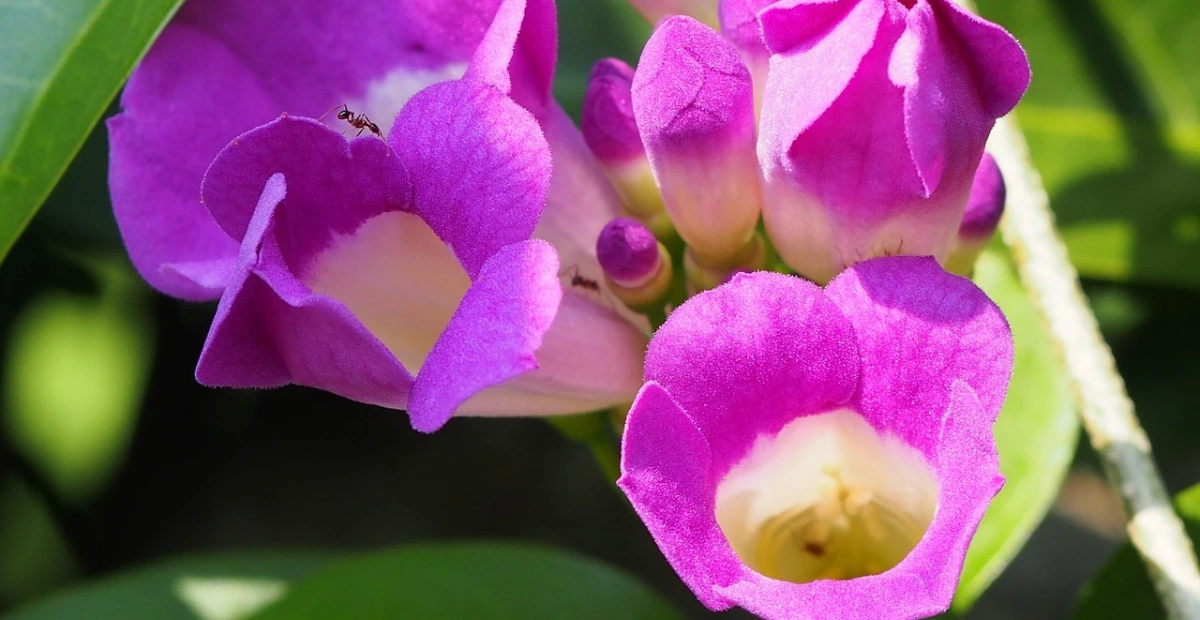Introduction
Imagine stepping into your garden and seeing a once-dull, shadowy corner now draped in vibrant blooms. You might think shade limits your gardening options, but flowering vine plants are here to prove otherwise. Whether it’s a north-facing wall, a tree-covered patio, or a dim balcony, these climbers thrive where sunlight is scarce. In this guide, you’ll learn how to choose the right flowering vine plants for shade, turning forgotten spaces into lush, vertical gardens. Let’s dig into the secrets of shade-loving vines—no green thumb required.
advertisement
Table of Contents
Why Shade Matters for Flowering Vine Plants
The Science of Light and Blooms
Not all plants crave sunlight. Flowering vine plants adapted to shade have evolved to photosynthesize efficiently with minimal light. For example, climbing hydrangeas produce larger leaves to capture scattered light, while clematis varieties like ‘Nelly Moser’ use delicate petals to reflect available rays. According to a USDA study, shade-tolerant vines prioritize energy for blooms over rapid growth, ensuring they flower even in low-light conditions.
Common Shade Challenges (and Solutions)
- Moisture retention: Shady soil stays damp longer, risking root rot. Fix: Use well-draining soil mixes.
- Slower growth: Patience is key—shade-loving vines grow steadily but reward with longevity.
- Pest risks: Slugs and snails love damp shade. Fix: Sprinkle diatomaceous earth around the base.
advertisement
Top 5 Flowering Vine Plants for Shade
1. Climbing Hydrangea (Hydrangea petiolaris)
- Blooms: Creamy white clusters in late spring.
- Best for: Covering stone walls or fences.
- Care: Thrives in acidic soil; water weekly.
2. Dutchman’s Pipe (Aristolochia macrophylla)
- Blooms: Quirky yellow-green pipe-shaped flowers.
- Best for: Creating dense arbors.
- Care: Prune annually to control rapid growth.
3. Clematis ‘Nelly Moser’
- Blooms: Starry pink-and-white petals.
- Best for: Trellises in dappled shade.
- Care: Mulch roots to keep them cool.
advertisement
Comparison Table: Shade-Tolerant Flowering Vines
| Plant | Bloom Color | Light Needs | Growth Rate |
|---|---|---|---|
| Climbing Hydrangea | White | Partial-Full Shade | Slow |
| Dutchman’s Pipe | Yellow-Green | Partial Shade | Fast |
| Clematis ‘Nelly Moser’ | Pink | Dappled Shade | Moderate |
How to Choose the Right Flowering Vine Plants for Shade
4 Key Factors to Consider
- Soil Type: Test pH levels with a $10 kit. Hydrangeas need acidic soil (pH 5.5-6.5), while clematis prefers neutral.
- Support Structures: Heavy vines like hydrangea need sturdy walls; lightweight options (e.g., jasmine) suit trellises.
- Climate: Tropical vines (e.g., passionflower) thrive in Zones 9-11; hardy varieties survive frost.
- Bloom Time: Pair spring bloomers (hydrangea) with summer stars (clematis) for year-round interest.
advertisement
Pro Tip: Start Small
Begin with one vine to gauge your shade’s intensity. Observe how it responds before expanding.
Planting and Caring for Shade-Loving Vines
Step-by-Step Planting Guide
- Prep Soil: Mix compost, peat moss, and perlite (see recipe table below).
- Dig Holes: Twice as wide as the root ball.
- Water Deeply: Soak roots immediately after planting.
Table: Soil Amendment “Recipe”
| Ingredient | Purpose | Quantity per Sq. Ft. |
|---|---|---|
| Compost | Nutrient boost | 2 cups |
| Peat Moss | Retain moisture | 1 cup |
| Perlite | Improve drainage | ½ cup |
Seasonal Care Checklist
- Spring: Fertilize with slow-release granules.
- Summer: Mulch to retain moisture.
- Fall: Trim dead wood.
- Winter: Protect roots with straw.
advertisement
Design Ideas for Shady Vertical Gardens
Mix Textures for Visual Depth
Pair broad-leaf hydrangea with feathery ferns at the base. Add a pop of color with variegated ivy.
Container Gardening Hack
Grow compact vines like chocolate vine (Akebia quinata) in pots for shaded patios. Use a 15-inch pot with drainage holes.
FAQ Section
Can flowering vine plants survive in full shade?
Yes! Climbing hydrangea and English ivy thrive in full shade, though blooms may be fewer.
advertisement
How often should I water shade-loving vines?
Check soil moisture weekly. Water when the top inch feels dry—usually 2-3 times a week in summer.
Do flowering vine plants attract pollinators in shade?
Absolutely. Bees and butterflies adore clematis and jasmine, even in low light.
Conclusion
Your shady garden isn’t a limitation—it’s a blank canvas waiting for vertical drama. With the right flowering vine plants, you’ll transform dim corners into blooming sanctuaries. Ready to start? Grab a climbing hydrangea or clematis, follow the steps above, and watch your garden defy the shadows. Don’t forget to share your progress with #ShadeVineMagic. Happy planting!
advertisement


